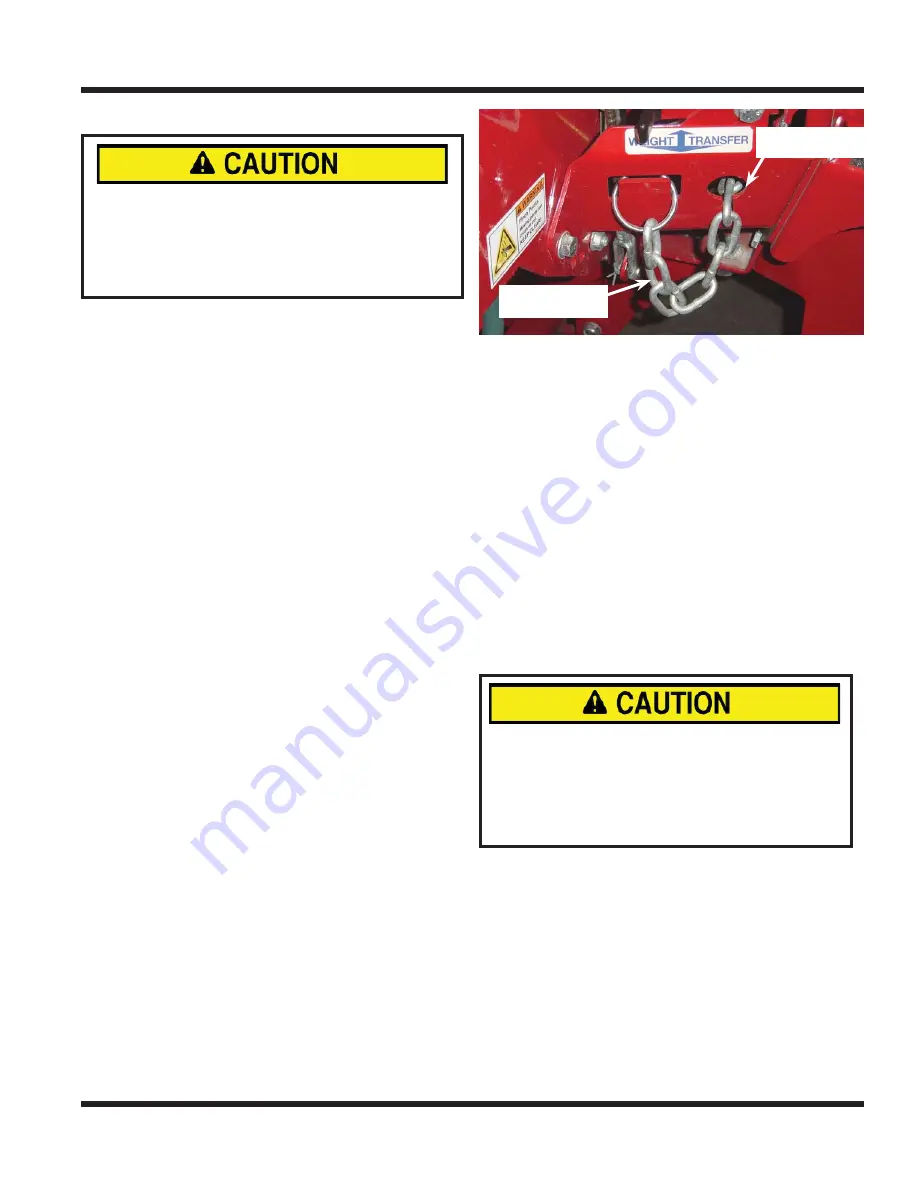
GENERAL OPERATION
Operation - 25
F
RONT
A
UXILIARY
C
OUPLERS
EQUIPMENT DAMAGE!
Dirt and other debris in hydraulic system can
cause damage to the system. Wipe clean the
mating parts of the couplers before coupling.
Use protective rubber plugs over hydraulic
couplers when not in use.
If attachment requires auxiliary hydraulics, couple the
attachment hoses with the front auxiliary couplers. This
is done by sliding the collar of the coupler rearward
and inserting the end of the attachment hose into the
coupler and releasing the collar. If the collar will not
snap forward on its own, pull it forward manually.
The couplers that the hoses are attached to will
affect which way the secondary S.D.L.A. lever is
pushed to control the action of the attachment. If
the hoses are connected and the action is not the
desired motion, then switch the hoses the couplers
are attached to. Auxiliary couplers are controlled by
moving the secondary S.D.L.A. lever left or right.
NOTE: Pressure build-up in the attachment hose
and on the power unit couplers may occur, causing
dif
fi
cult installation of hoses. If hoses do not easily
connect, try one or both of the following steps: 1)
To release the pressure from power unit couplers,
turn off engine and move the secondary lever of
the S.D.L.A. right and left to release pressure in the
power unit’s hydraulic circuit.
2) To release pressure in the attachment hose,
loosen one of the hose ends, tighten when pressure
is released.
W
EIGHT
T
RANSFER
(O
PTIONAL
A
CCESSORY
)
The weight transfer system transfers weight from the
attachment to the front wheels of the power unit. The
operator can select different transfer rates by adjust-
ing the right and left weight transfer chains.
To set the weight transfer, raise the front hitch to its
maximum height.
Weight Transfer
Weight Transfer
Chain
Chain
Weight Transfer
Weight Transfer
Chain Lock
Chain Lock
Lift the weight transfer chain link out of the chain
lock slot. Feed the chain back through the hole to
decrease amount of transferred weight or pull the
chain out through the hole to increase the amount
of transferred weight. When the desired setting is
reached, insert chain link back in the chain lock slot.
Selecting the proper amount of weight to transfer
depends on attachments, ground conditions and
operator preference. A lightweight attachment (e.g.
KA160 Power Blower) will not go down with full
weight transfer on. With full weight transfer on and
mowing in the
fl
oat position, the mower may not
come down quickly enough when going through
uneven terrain. Weight transfer must be reduced or
speed must be lowered.
H
IGH
/L
OW
R
ANGE
Never shift while under load, while moving, or
while on a slope. Always ensure the shift handle
is secured in the lock position at the end of each
shift stroke.
For slopes greater than 15 degrees, always
use low range.
Low range is recommended for most pulling, push-
ing, and slow travel. High range is ideal for transport
and light duty tasks.
Stop the power unit and engage the parking brake.
Move the shift lever to the desired range setting.
Occasionally engagement of the transaxle gears is
prevented by gear misalignment. Moving the steer-
ing wheel slightly to the right or left will move the
gears enough to complete the engagement.
GENERAL OPERATION
















































